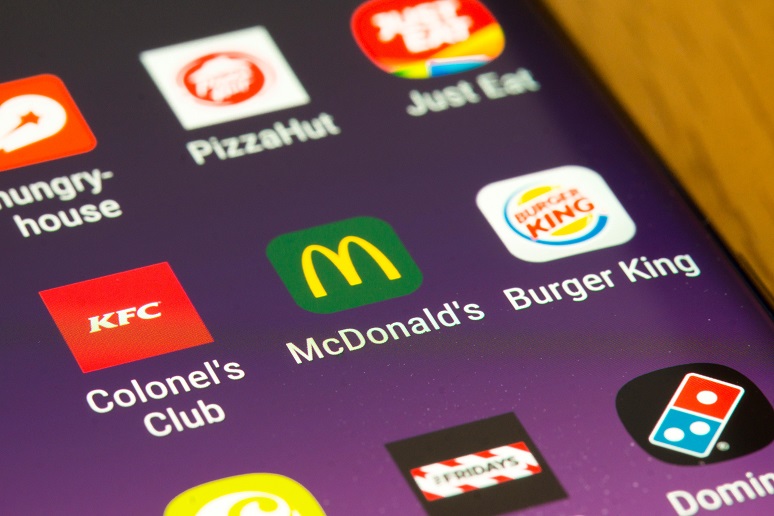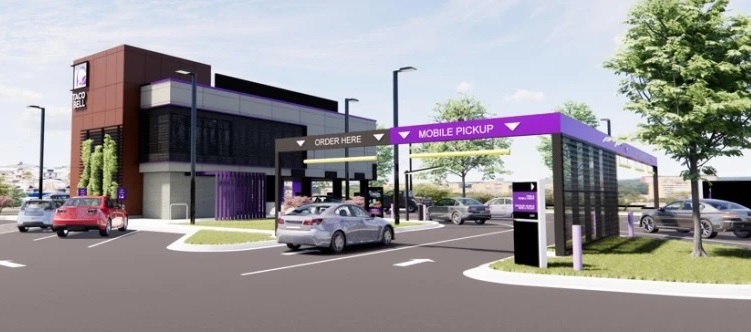A phrase I’ve heard throughout the pandemic is that the contact center became the front door for business. While there’s some truth to that, we shouldn’t dismiss the businesses that did keep their front doors open during the pandemic — or in this case their drive-thru windows.
There’s a lot to learn from the fast-food industry. It’s a sector most of us are at least familiar with as customers, and it's highly relatable due to casual familiarity. For example, the differences between parallel and serial processing can be seen in the multi-line ordering process at McDonald’s versus the single-line approach practiced at Wendy’s.
The sheer size of these national and international fast-food chains allows them to spend a considerable amount on research and technology. The 2021 global fast food market was
estimated at $972.74 billion with a compound annual growth rate of 6%. McDonald’s reported revenue for the twelve months ending March 31, 2022, at $23.764 billion, a 21.13% increase from last year. Yum! Brands, the parent for Taco Bell, KFC, Pizza Hut, and others reported revenue for the same period at $6.645 billion, up 13.11% from the prior year.
Clearly, the quality and the taste of the food is important, but research keeps telling us that the overall customer experience drives loyalty more than any single element. The fast-food sector has elements of both service and manufacturing companies. And, like most industries, the fast-food industry is going through various forms of digital transformation.
The traditional service model in fast food begins with an employee taking an order. The same person often gathers the items, collects payment, and delivers it to the customer. This “agent” is also expected to upsell, answer questions, and manage custom requests. This traditional, or analog, experience is largely being displaced by modern digital alternatives.
Like the contact center industry, the fast-food giants are looking to new technologies to streamline and automate processes with the goal of improving the customer experience. Inside many of these restaurants, kiosks are the industry’s version of digital self-service. These ordering kiosks present an illustrative menu, support multiple languages, and process digital payments. They were odd at first, but the public seems to be accepting them.
The next step was the smartphone app. Most of these restaurant chains now have mobile apps that put their kiosk in your pocket. Because these apps are associated with a single user, they can also provide a personalized experience. Many of these apps offer online ordering, digital payments, specials, and even points or loyalty programs.
Digital apps have been a game-changer for fast food.
Chipotle reported that in 2021, 48.5% of its total sales were digital. Mobile apps tend to appeal to frequent customers. They provide a way for restaurants to track and reward loyal customers better than before. The restaurants can now offer rewards and even status tiers like the airlines have done for years.
But what to do about the drive-thru? According to Bake Magazine, drive-thru sales accounted for 42% of all restaurant traffic in November of 2021, up from 26% in February 2020. The drive-thru is more complex. Most restaurants are limited to one drive-thru lane, and variables in car sizes and arm lengths make kiosks unpractical. That’s why I think it’s so fascinating to watch how these giants approach digital transformation. Here, Taco Bell and McDonald’s are taking different approaches.
Earlier this month, Taco Bell opened its first “Defy” restaurant in Brooklyn Park, MN. Defy is a strange name for a restaurant style, presumably it’s because it defies classification. The Defy restaurant can be described as a two-story or an elevated one-story restaurant. It’s raised to accommodate four drive-thru lanes underneath it.
Taco Bell says the restaurant was designed with the goal of providing a two-minute or less drive-thru experience. This is partially accomplished with the four lanes, but the Defy concept also encourages customers to use the Taco Bell mobile app. Three of the lanes are for people that order via the mobile app usually before they arrive. On arrival, customers scan a QR code displayed on their smartphone, and the kitchen delivers the order via the vertical lift.
The system is also designed to accommodate third-party delivery drivers for services such as DoorDash. That’s important because some people don’t have two minutes to spare in a drive-thru.
The fourth drive-thru lane is for Luddites and/or people (like me) that prefer a traditional human-powered experience. Or, anyone can go inside to use the “traditional” kiosks. By eliminating the bottleneck of the single drive-thru, Taco Bell expects the Defy concept will process four times the orders of a standard drive-thru restaurant.
The Defy concept, based on these goals, appears to make sense. We are seeing similar actions in the contact center. At the recent NICE Interactions user conference, there were discussions about customer journeys starting before the customer communicates with the contact center. NICE describes these new entry points as “digital doorsteps.” Via the digital app, the drive-thru experience begins before the customer arrives.
McDonald’s is taking a different approach to digitally transform its drive-thru. Instead of re-training the customer, it’s turning to natural language processing to streamline and automate the process. The burger giant created McD Tech Labs (based on the acquisition of Apprente in 2018). McD piloted voice assistant bots in 10 Chicago area drive-thrus last year. It found that its bot technology offered 85% accuracy with only one in five orders requiring human assistance.
That’s good enough to warrant more development, but not good enough for a national roll-out yet. Late last year, IBM acquired McD, and it has enhanced the technology. IBM has expertise in natural language processing (from its Watson solutions), and a national field service capability. IBM has since indicated that it will roll out the technology to more McDonald’s restaurants this year — eventually to all of them.
A digital display at the drive-thru confirms the order as it’s created. The McBot doesn’t require breaks and speaks multiple languages. It’s an intriguing use of conversational AI technology. There’s a finite number of ways to order a McDonald’s meal, and a bot can be trained to understand all of them. The bot should also be able to handle most questions.
If the chatbot tech handled 80% of the orders without human assistance in 2021, we can safely assume it will do much better in 2023. The obvious reason is because the technology is evolving rapidly, and we see conversational AI at the heart of the vast majority of contact center announcements. Another reason why the tech is improving is human familiarity and adaptation.
When Steve Jobs introduced Siri, he said we can talk to it naturally, but it didn’t live up to expectations. Although it’s called natural language processing, bots are not particularly good at understanding humans naturally. Siri and several other voice assistants remain popular, but largely because humans are adapting.
We are learning that when speaking to a bot, we should speak very clearly and avoid confusing words. It’s even become common to verbalize punctuation. These types of behavioral modifications allow the technology to serve us better. That’s what’s so exciting about the McDonald’s drive-thru. These McBots are going to normalize human/bot interactions on a large scale.
Both of these drive-thru approaches are a form of digital transformation. Both approaches apply to most businesses. The app model has the benefit of a more intimate relationship with the customer. Apps can provide a more personalized experience that leverages prior purchase information, location, and other variables. However, apps tend to require an established/committed relationship. Many customers will wait until they feel there’s a strong recurring business relationship before installing an app. There’s also trust concerns. Last month,
Tim Hortons was fined for abusing app data for ad targeting.
Domino’s used its mobile app to radically transform its business. Earlier this year, Dominoes had a problem hiring delivery drivers. It needed to encourage customers to pick up their own pizzas. That’s tricky considering its brand is strongly associated with delivery.
Dominoes ran a promotion within its mobile app encouraging pickup orders. “Domino's Pizza believes every great delivery driver deserves a tip…Carryout customers who order online can claim a $3 tip to use on their next online carryout order.” By using the app, the promotion was limited to loyal customers. They limited their risk of confusing the general public.
Using conversational AI has the advantage of updating rather than changing the established drive-thru process. To borrow a phrase from Callan Schebella, EVP Product Management at Five9, “the conversation is the transaction.” The contact center is benefiting from conversational AI in a variety of ways including self-service chatbots, augmented agent services, sentiment scoring, and more.
Conversational AI technologies have impacts well beyond the contact center (and drive-thru). Cognigy, for example, offers a platform play that encourages many enterprise use cases, including, customer service, HR, marketing, payroll, and service/dispatch. Cognigy also allows customers multiple channels over both text and speech. Curiously, VentureBeat has
Cognigy and McDonald’s both competing for the same Conversational AI Award at its upcoming Transform 2022 event.
The customer experience is going through some radical changes. The pandemic caused many of us to reexamine established processes, both as employees and as customers. Many of our business practices were created in a different era. There was a time when the drive-thru itself was a customer experience innovation.
The contact center is going through a new Cambrian explosion of innovation, but it’s not the only customer experience touchpoint. It’s important to revisit existing processes and examine if/how/when they can be improved. The technical options are rapidly changing.
Dave Michels is a contributing editor and analyst at TalkingPointz.











